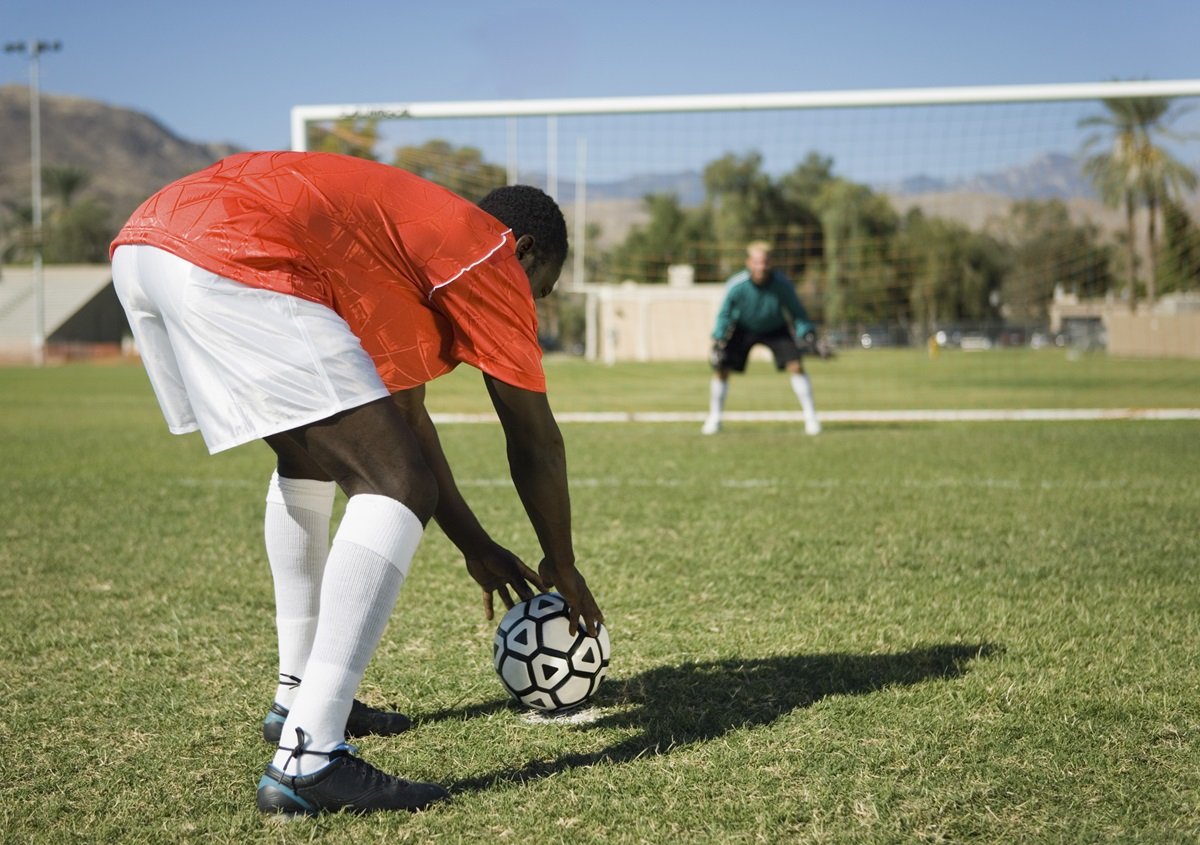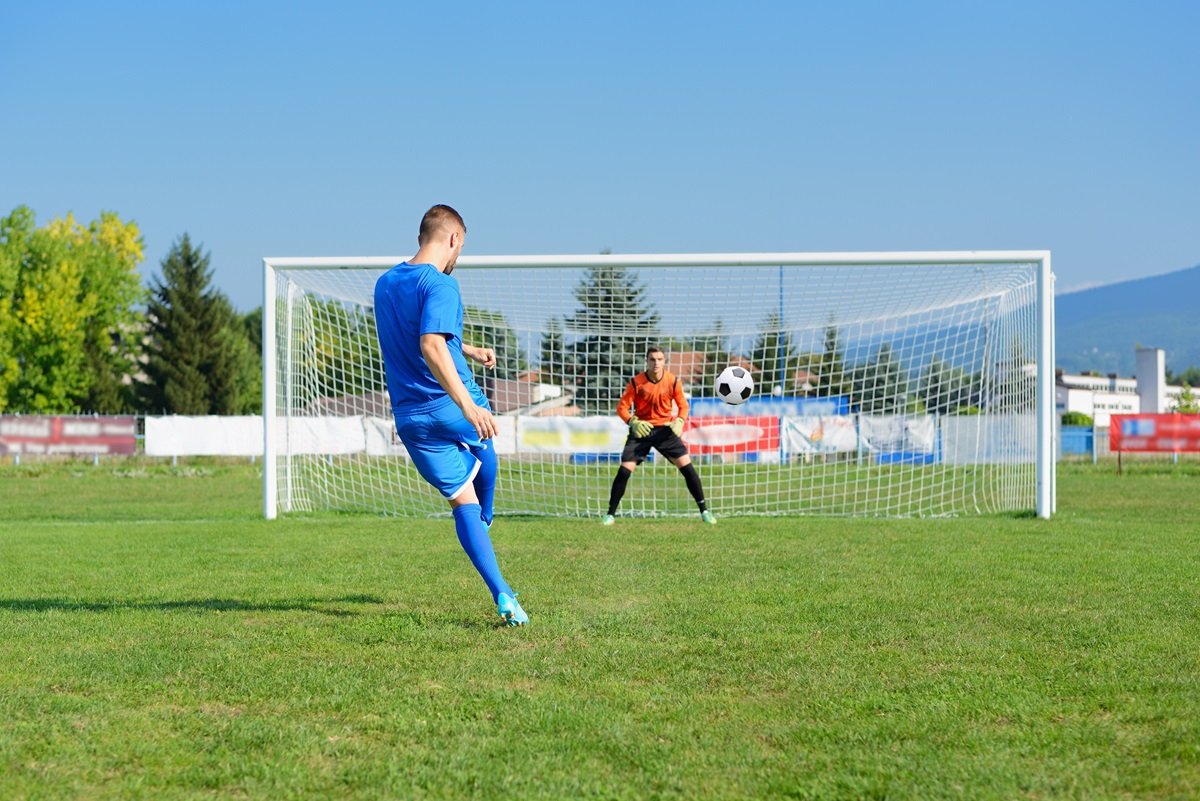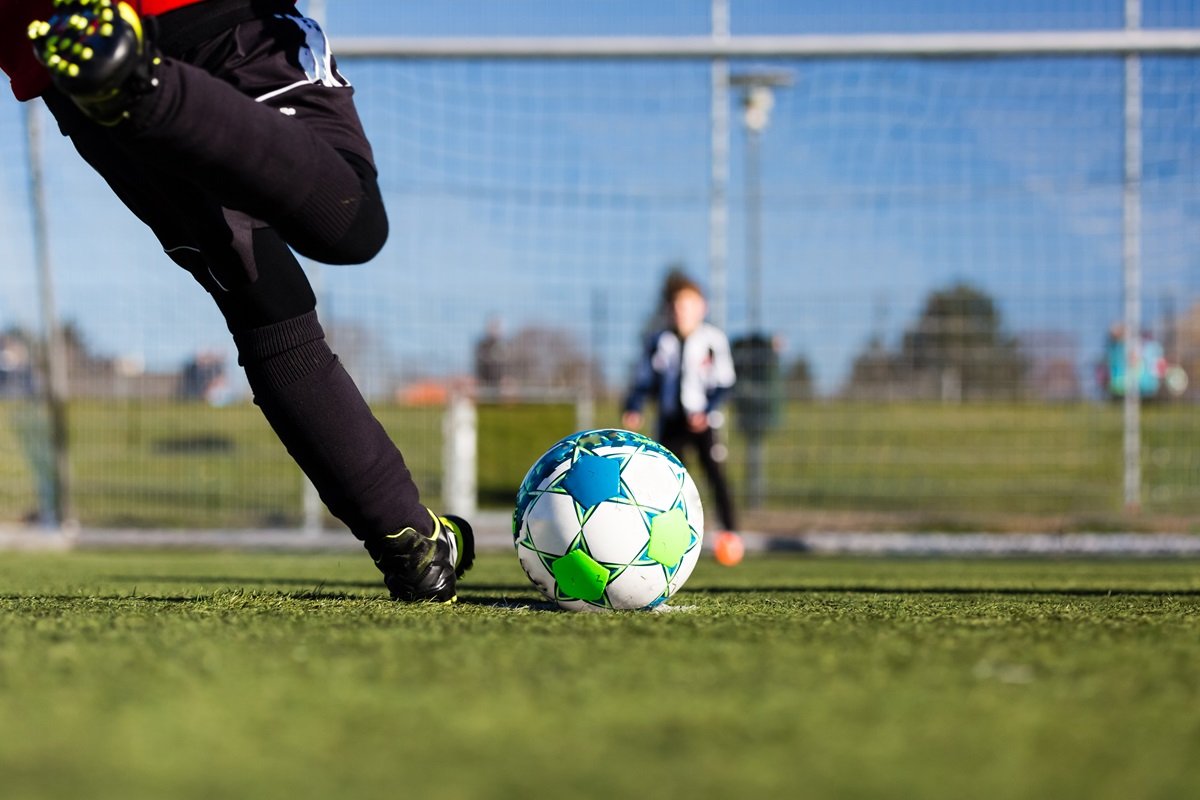
Taking a penalty kick is the most daunting task in football, as you are pitted one-on-one against the goalkeeper. A penalty kick could be a deciding factor in a game, or you could be taking one as part of a penalty shootout where you have the chance to help your team progress to the next round or keep your team in the competition.
No matter the circumstances, the pressure is immense, but with the right technique and practice, you can become a master penalty taker. This guide shares some of the best penalty drills a coach can plan for their next training session.
The best penalty drills in football
- Basic penalty kick drills
- Pressure penalty kick simulation
- Target practice
- Change the goalkeeper's strategy
- Analyse professional players penalties
- Duplicate fatigue when taking a penalty
- Blindfolded penalty kicks
Basic penalty kick drills

A tried and tested drill that many coaches include in their training sessions, which can enhance their players’ penalty kick abilities, is the basic penalty kick drill.
Penalties, like any other football skill, need to start with the basics. This training drill does exactly that and involves players practicing taking penalty kicks from the penalty spot without a goalkeeper.
The aim of this penalty kick training drill is to focus on a player’s technique and should involve the coach asking the player to aim for different parts of the goal. During this basic drill, coaches can assess if a player has their head over the ball, if they are balanced as they kick and if they are following through after they kick the ball.
ALSO READ: When is the grassroots football season in the UK?
Pressure penalty kick simulation
In training, it can be virtually impossible to replicate taking a penalty during a match or in a real penalty shootout.
However, one of the best penalty coaching drills that you can include in a training session that helps simulate the pressure of a real game is to have players take penalty kicks while all their teammates are watching.
One great scenario that you can include in a training session is to state that a player or a team must score a penalty to win a practice match. This goes a long way to help players maintain composure under pressure.
ALSO READ: What does it take to be a successful football coach?
Target practice

Target practice is a common drill for free kicks and shooting in general, but it should also be used when it comes to practicing penalty kicks.
You can easily set up penalty drills that involve targets. You need to place targets such as cones or small goals in a full-size goal and ask the penalty kick taker to hit the target you shout out.
A drill like this can improve a player’s shooting technique and accuracy, as well as help them learn about how they can place their shots away from the goalkeeper’s reach.
A piece of training equipment that could help a penalty kicktaker with their accuracy is the Sharpshooter goal target net, which has coloured cut-outs for target practice.
Change the goalkeeper's strategy
This training drill sees coaches ask the goalkeeper to change their strategy for each penalty, which will help the player taking it adapt to different strategies that keepers in a real game will often use.
Coaches can get their goalkeeper to stand in the centre of the goal and not dive, then, for other penalties, favour diving to one side of the goal. You can even get your keeper to try to psych the penalty taker out by using various tactics.
Doing penalty kick training like this can help prepare penalty takers to read the goalkeeper's intentions and decide where to shoot.
ALSO READ: How to support kids to improve their football skills
Analyse professional players' penalties
At the grassroots level, one of the great ways you can attempt to improve a player’s penalty-taking technique is to analyse professional players taking penalties.
Using video analysis from professional matches allows your team to study different penalty-taking techniques and different strategies goalkeepers use when facing a penalty.
As part of the analysis meeting, you can discuss what techniques work, what doesn’t and why.
Duplicate fatigue when taking a penalty

Penalty shootouts occur at the end of games, and in some cases, they occur after extra time when players are exhausted.
You can try to replicate this by taking penalties at the end of a training session where players have been running around. Doing this at the end of every training session can help players maintain their focus and technique despite being extremely tired.
ALSO READ: Football workouts to improve your fitness and your game
Blindfolded penalty kicks
A slightly fun penalty kick drill that you can try at training is to blindfold the players taking the kick. This is not only fun but can enhance a player’s sense of where the goal is and their spatial awareness.
It should be noted that when you are setting up this drill, you will need to make sure that there are safety precautions in place, as the last thing you want is for a player to injure themselves.
Adding these penalty kick drills to your training sessions can help players become more confident in taking penalties, especially regarding potential game-winning opportunities.
If you are a coach or are associated with a football club, you must ensure that you have the best football training equipment in the UK. You can browse our website for equipment like a football tactic board or other training gear.
For more tips, guides, and advice, visit our news page.




